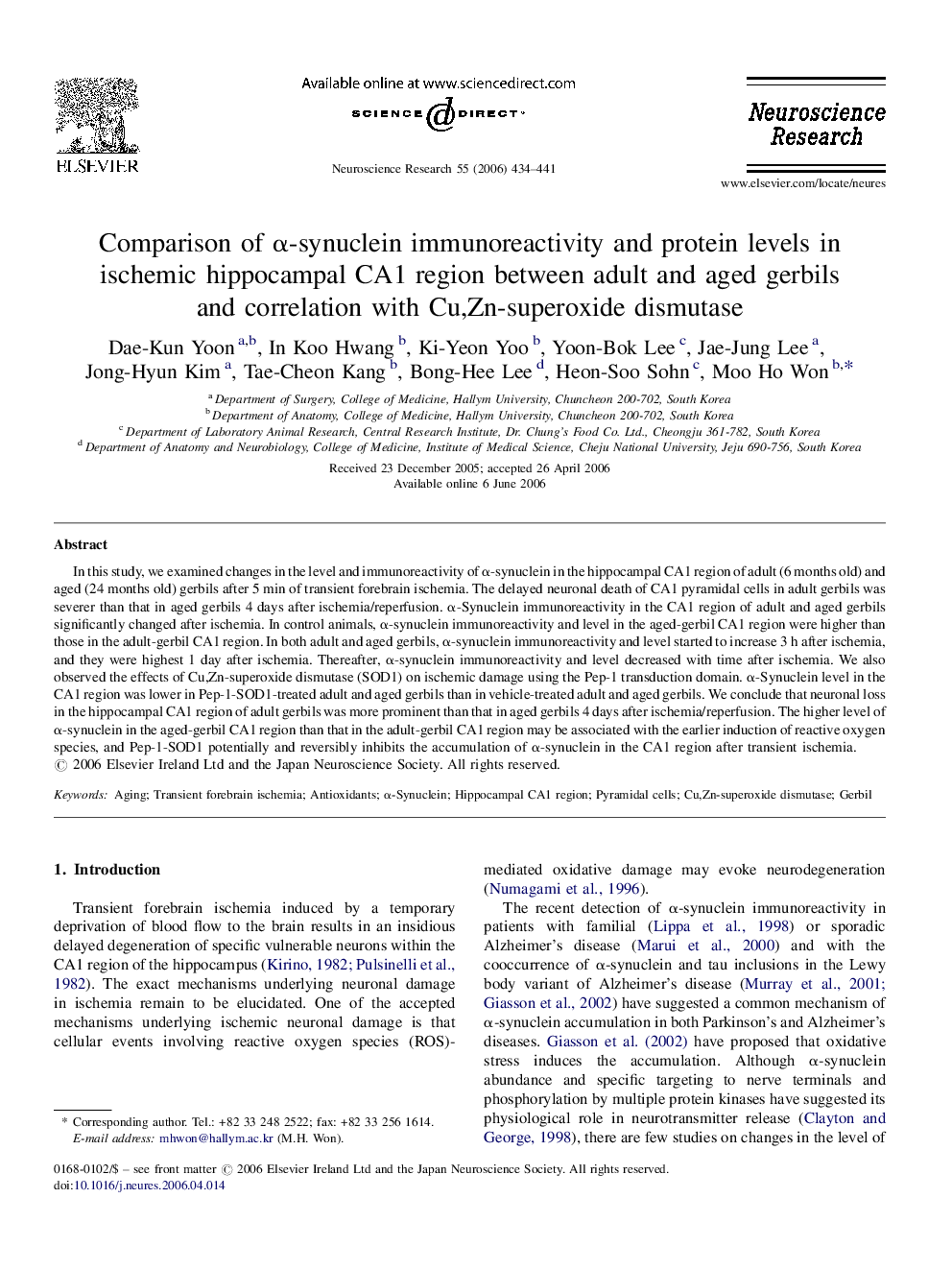| Article ID | Journal | Published Year | Pages | File Type |
|---|---|---|---|---|
| 4352558 | Neuroscience Research | 2006 | 8 Pages |
Abstract
In this study, we examined changes in the level and immunoreactivity of α-synuclein in the hippocampal CA1 region of adult (6 months old) and aged (24 months old) gerbils after 5 min of transient forebrain ischemia. The delayed neuronal death of CA1 pyramidal cells in adult gerbils was severer than that in aged gerbils 4 days after ischemia/reperfusion. α-Synuclein immunoreactivity in the CA1 region of adult and aged gerbils significantly changed after ischemia. In control animals, α-synuclein immunoreactivity and level in the aged-gerbil CA1 region were higher than those in the adult-gerbil CA1 region. In both adult and aged gerbils, α-synuclein immunoreactivity and level started to increase 3 h after ischemia, and they were highest 1 day after ischemia. Thereafter, α-synuclein immunoreactivity and level decreased with time after ischemia. We also observed the effects of Cu,Zn-superoxide dismutase (SOD1) on ischemic damage using the Pep-1 transduction domain. α-Synuclein level in the CA1 region was lower in Pep-1-SOD1-treated adult and aged gerbils than in vehicle-treated adult and aged gerbils. We conclude that neuronal loss in the hippocampal CA1 region of adult gerbils was more prominent than that in aged gerbils 4 days after ischemia/reperfusion. The higher level of α-synuclein in the aged-gerbil CA1 region than that in the adult-gerbil CA1 region may be associated with the earlier induction of reactive oxygen species, and Pep-1-SOD1 potentially and reversibly inhibits the accumulation of α-synuclein in the CA1 region after transient ischemia.
Keywords
Related Topics
Life Sciences
Neuroscience
Neuroscience (General)
Authors
Dae-Kun Yoon, In Koo Hwang, Ki-Yeon Yoo, Yoon-Bok Lee, Jae-Jung Lee, Jong-Hyun Kim, Tae-Cheon Kang, Bong-Hee Lee, Heon-Soo Sohn, Moo Ho Won,
